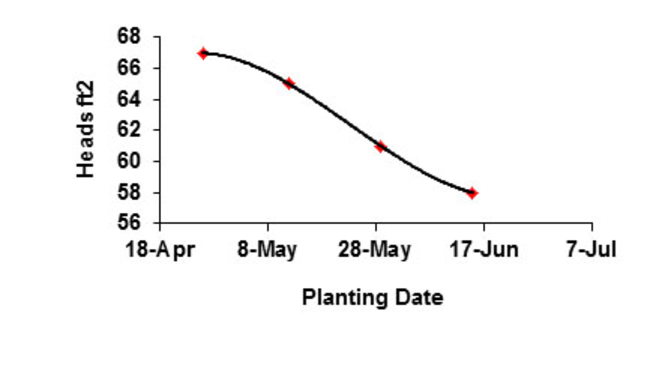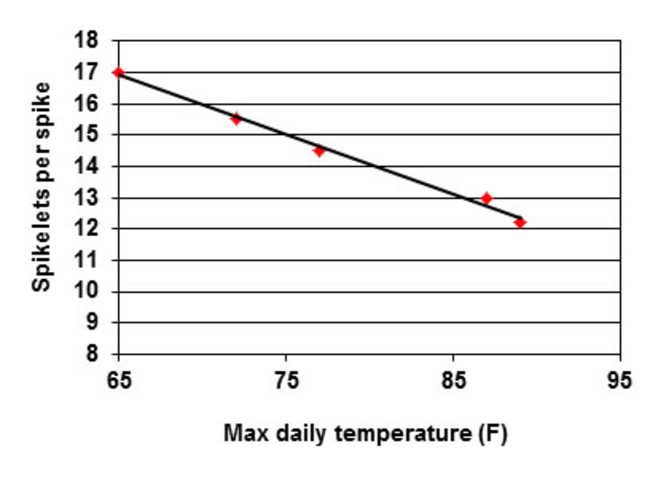Wheat, barley and oats are cool season annuals that are most productive when they grow and develop during cool weather.
The crop’s yield potential is largely determined by 6-leaf stage. Cool temperatures during this period are particularly important to develop high yield potential. For example, the number of tillers that ultimately produce grain at harvest declines as planting is delayed (Figure 1).
The number of spikelets per spike is determined during the 4- to 5.5-leaf stage (Figure 2). Spikelet numbers are negatively correlated with temperature; you get more spikelets per spike when temperatures during the 4- to 5.5-leaf stages are cool.
Crop development
The higher average temperatures expected with late planting will speed up a crop’s development. Heat units accumulate faster, pushing the crop to the next phase of development.
This forces the crop to develop faster and gives plants less time to grow. Plants end up with fewer tillers, smaller heads and fewer and smaller kernels per head, which ultimately cuts into yields.
To improve the odds of high grain yields, plant early to ensure the tillering and head initiation phases occur during relatively cool temperatures (Table 1).
Planting dates: Optimum and last
Table 1: Average seeding dates and last recommended seeding dates for small grains in Minnesota
| Minnesota | Optimum seeding date | Last planting date |
|---|---|---|
| South of U.S. Highway 12 | First week of April | First week of May |
| South of Minnesota Highway 210 | Second week of April | Second week of May |
| Second week of May | Third week of April | Third week of May |
| South of U.S. Highway 2 | Fourth week of April | Fourth week of May |
| South of Canadian border | First week of May | First week of June |
Research has shown that, on average, yields decreased 1 percent per day when planting is delayed past the optimum planting date. Planting after the last possible date is not recommended because grain yield and quality (test weight) will likely be dramatically reduced due to heat stress.
You can partially offset this yield loss by increasing the seeding rate and ensuring you have more main stems per unit area. Increase the seeding rate by 1 percent for every day after the optimum planting window.
Adjusting the planting date
The last possible date for planting is not set in stone. The chances of a profitable crop only drop because of the weather and temperatures expected later in the growing season. If you’ve passed the last possible date, consider an alternative crop, though economically feasible.
If you stay with small grains past that date, you’ll have to hope for a cool and dry summer. For example, summer 2013 weather conditions were so favorable that, despite the late planting date, Minnesota’s average hard red spring wheat (HRSW) yield was the third highest ever reported. This was largely the result of cooler nighttime temperatures.
Reviewed in 2018



